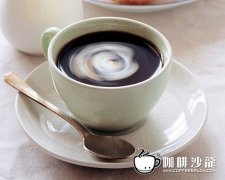The difference between freshly ground Coffee and Instant Coffee
Modern fast-paced life has created a lot of simplified goods for us, and instant coffee is one of them.
"instant coffee" is not coffee, which is a common view in the traditional coffee industry. Because instant coffee is a synthetic product of industrialization, it should be said to be a substitute for coffee, rather than coffee in the original sense. Because in the enjoyment of traditional coffee, from the grinding, cooking, filtering of coffee beans, as well as the selection of utensils and different blending techniques, are very particular. On the other hand, instant coffee is only flushed with water, although it also has the taste of coffee, but it loses the thick cultural atmosphere in coffee making.
In particular, the most direct after-effect of instant coffee is that coffee culture is declining among the younger generation, especially in some newly opened areas where there is no habit of drinking coffee, instant coffee has occupied a dominant position from the market to people's ideas.
From this, I think that our tea culture seems to be facing such a challenge. Tea art and tea ceremony have now been reduced to performances on the stage. Teahouses with folk cultural traditions are either in decline or have been transformed beyond recognition. The so-called tea bags and sweet and greasy tea drinks are becoming a "substitute for tea" on social occasions or for the younger generation. Maybe one day, when we want to drink tea in a foreign country, all we can get is a can of tea.
Modernization is making our life easier, but it is also simplifying many of our precious cultural traditions. Should we also allow ourselves to relax and enjoy this unique cultural atmosphere?
In fact, whether it is tea culture or coffee culture, the traditional production method is not so complicated. A cup of freshly ground coffee takes no more than 5 minutes from preparation to making. At the same time, we can choose any way we like to brew it. From simple and pure follicles to romantic Italian, we can experience the wonderful fun!
Commercial production does give birth to instant coffee, but we know the disadvantages of instant coffee and the beauty of freshly ground coffee, so now is the time for us to bid farewell to the instant era and enjoy freshly ground coffee!

Important Notice :
前街咖啡 FrontStreet Coffee has moved to new addredd:
FrontStreet Coffee Address: 315,Donghua East Road,GuangZhou
Tel:020 38364473
- Prev

Coffee drinkers' favorite is about coffee partner "milk".
Milk is one of the most widely used coffee condiments. Traditionally, in some countries such as Yemen, Ethiopia and Turkey, milk is never added to coffee. It is generally believed that milk was first added to coffee by Sieur Monin in Grenoble in 1685. In the mid-1980s, 57% of Americans drank coffee with milk.
- Next

Water is the enemy of coffee storage. Coffee beans are preserved.
The ideal way to buy and make coffee is to buy a small amount of raw coffee beans, bake them yourself, and grind them before preparing them. Water is the enemy of storing coffee. Coffee oil is water-soluble, it makes coffee more flavor, moist environment will rot coffee oil. Do not store the coffee in the fresh layer of the refrigerator, because as soon as the refrigerator is opened, the moisture will condense on the surface of the container. If
Related
- Beginners will see the "Coffee pull flower" guide!
- What is the difference between ice blog purified milk and ordinary milk coffee?
- Why is the Philippines the largest producer of crops in Liberia?
- For coffee extraction, should the fine powder be retained?
- How does extracted espresso fill pressed powder? How much strength does it take to press the powder?
- How to make jasmine cold extract coffee? Is the jasmine + latte good?
- Will this little toy really make the coffee taste better? How does Lily Drip affect coffee extraction?
- Will the action of slapping the filter cup also affect coffee extraction?
- What's the difference between powder-to-water ratio and powder-to-liquid ratio?
- What is the Ethiopian local species? What does it have to do with Heirloom native species?

